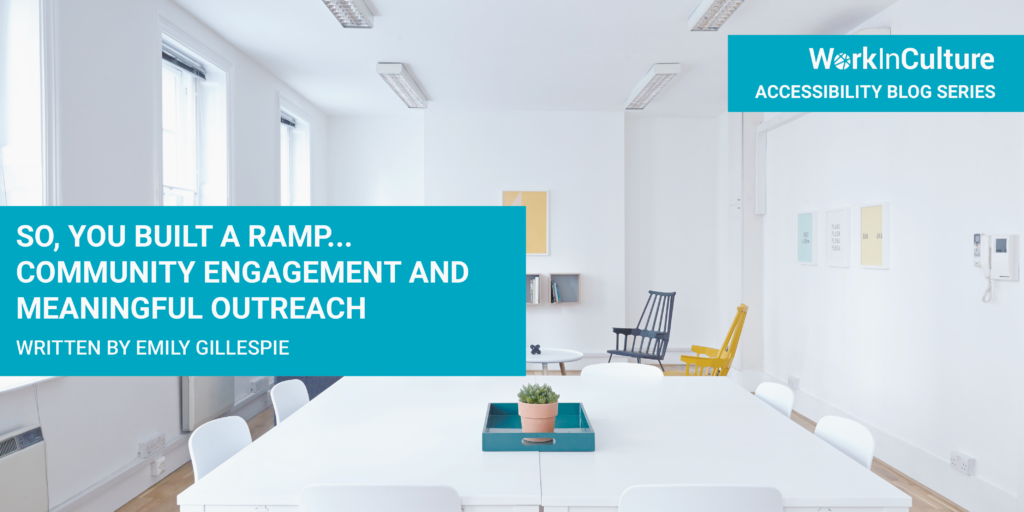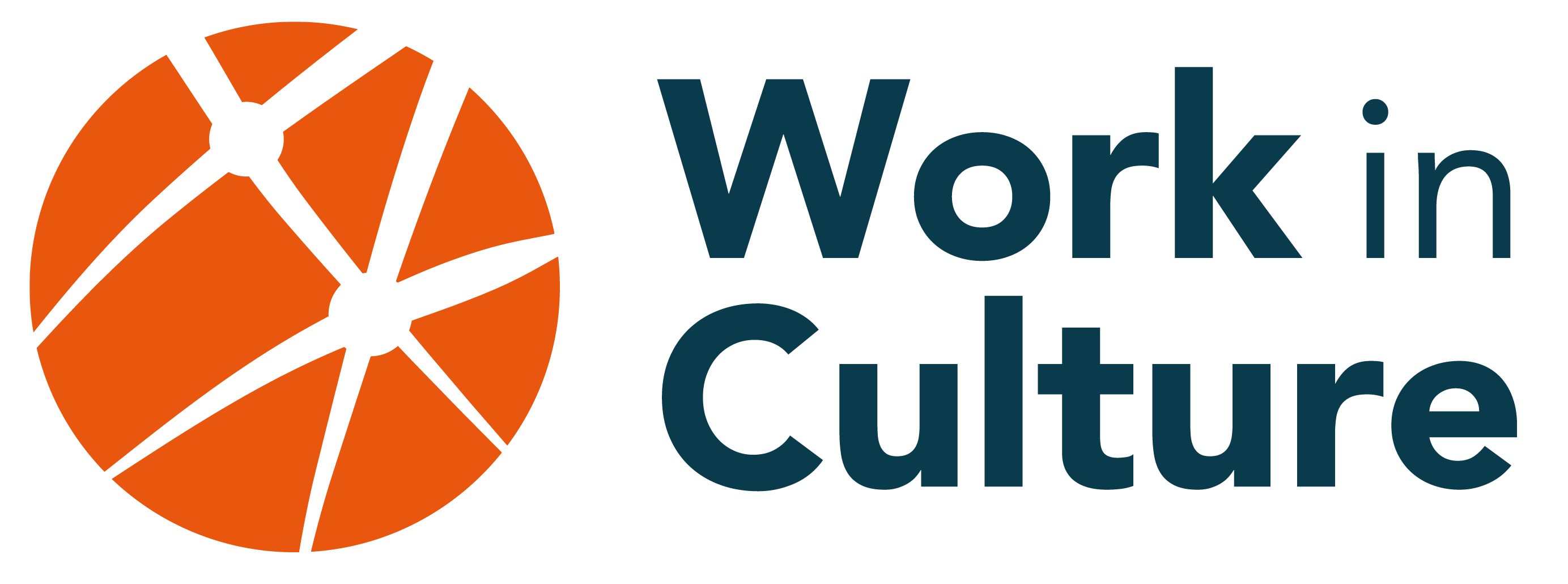
| Prioritizing Access (Volunteers) | Inclusive Workshops (Teaching Tips) | Support Providers | Leaders with Disabilities | Trauma-Informed Practices | Meaningful Outreach |
Written by Emily Gillespie
Introduction
It’s not enough to do the legal minimum that is needed to make a space physically accessible and assume that disabled people are going to show up and feel welcome. Disabled people have traditionally been excluded from arts and cultural spaces, as audiences, artists and leaders. It is important to understand that they have their own history, culture and experiences of exclusion. Think about who is represented in the room, and who should be represented. Think of disabled people as you build programs, rather than after, and remember to ask people for what they need.
Accessibility and Outreach
- Assume people with disabilities will be there, and plan for it, create an accessibility plan and access team (see prioritizing access – volunteer article #1).
- Are disabled people in leadership roles at the event? Event planning, organizing, speaking, panels, artists, etc.
- Learn from best practice guidelines of your specific discipline and expand on them.
- Is the event actually accessible? What barriers might people experience at the event? How have you planned to address these barriers? Many disable people have attended events that were advertised as accessible, only to realize they didn’t have basic accessibility features in place. If you’ve had inaccessible events in the past, disabled folks may assume all your events are inaccessible, take into consideration feedback and do extra outreach and promotion.
- Provide a phone number and email as a direct line of contact for accessibility related questions.
- Advertisements should describe any accessibility services provided (for example ASL for duration of event). Use the appropriate accessibility symbols on event promotion to indicate accessibility aids and features at events. Explain in detail the accessible features of a space, for instance, on a Facebook event post mention how many steps are into the building, and any other information that may be useful. Some folks may be able to navigate inaccessible spaces (such as two steps) including information allows people to make their own choices.
- Make sure that social media and websites are accessible; see Queen’s University Accessibility Hub for detailed access information. Many social media sites also include how to accessibility guides on their platform.
- How are disabled people involved in your local community? For instance, are there non-profits or community centres that work with disabled people? Can you contact these organizations directly or perhaps run an event with an organization? Reach out to the community and see what they are interested in and what their needs are, and remember that community partnerships are built overtime.
- Be intentional around outreach; for instance, if you want more folks with mental illness to submit to your call for proposals, consider where folks are on the internet, and in the community and build relationships.
- Ensure that you are offering fair compensation.
- As previously mentioned, consider the work of local, national and international organizations and festivals that focus on disability and art. How are these organizations engaging with their communities? In Toronto, for instance, there is Tangled Art+ Disability, and Workman Arts.
- Consider and celebrate the impact of disability and disability culture on arts and cultural spaces, make room for the expansion of what art practices can look like, rather than simply adding disabled folks to an abled art world (see leadership post #4).
- Can folks who can’t make it to the physical venue engage from their homes? How can technology be used to include more people, including disabled speakers and leaders?
- Is the event financially accessible? Many disabled people live on fixed incomes and may not be able to afford events. Are reduced rates or free tickets available for people experiencing a financial barrier?
- Make times on agendas and programs clear (especially for multi-day events) so disabled people can plan accordingly; for instance, someone may need to schedule a nap during a conference and having the agenda makes it easier to plan.
- Ensure event policies do not exclude disabled people (such as no technology, no late entry, etc.).
- Are there attitudinal barriers? Do event staff, and venue staff, volunteers, etc. understand accessibility and value having disabled folks present?
Conclusion
Thinking about including disabled people involves a shift in thinking for the arts and cultural world. Developing polices, training staff, volunteers and ensuring events are accessible is a place to start. Disabled folks need to be included as leaders and welcome to participate in events, not just attend. In cultural spaces like museums, disability history needs to be acknowledged and explored, as well as the contribution of disabled people in expanding how we think about art.
References:
A Planning Guide for Making Temporary Events Accessible to People With Disabilities
Social Media Accessibility
CARE WORK: Dreaming Disability Justice
Piepzna-Samarasinha, L.L. (2018). Care Work Dreaming Disability Justice. Vancouver, BC: Arsenal Pulp Press. https://arsenalpulp.com/Books/C/Care-Work
Further Reading:
A Checklist for Planning Accessible Conferences
Access Is Love Reading List
Nut and Bolts of Disability
###
More blogs from this series:
| Prioritizing Access (Volunteers) | Inclusive Workshops (Teaching Tips) | Support Providers | Leaders with Disabilities | Trauma-Informed Practices | Meaningful Outreach |
Emily Gillespie is a Toronto-based author and disability consultant, who enjoys using art to talk about disability. Emily recognizes that disabled people have different experiences and through her work focuses on people’s individual needs.
Follow Emily on Facebook and Twitter | Follow Accessibility Advocacy Art on Facebook
